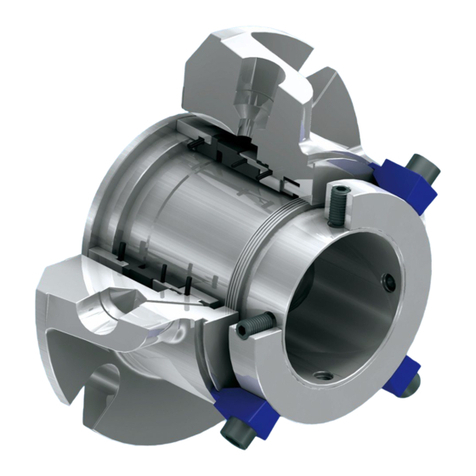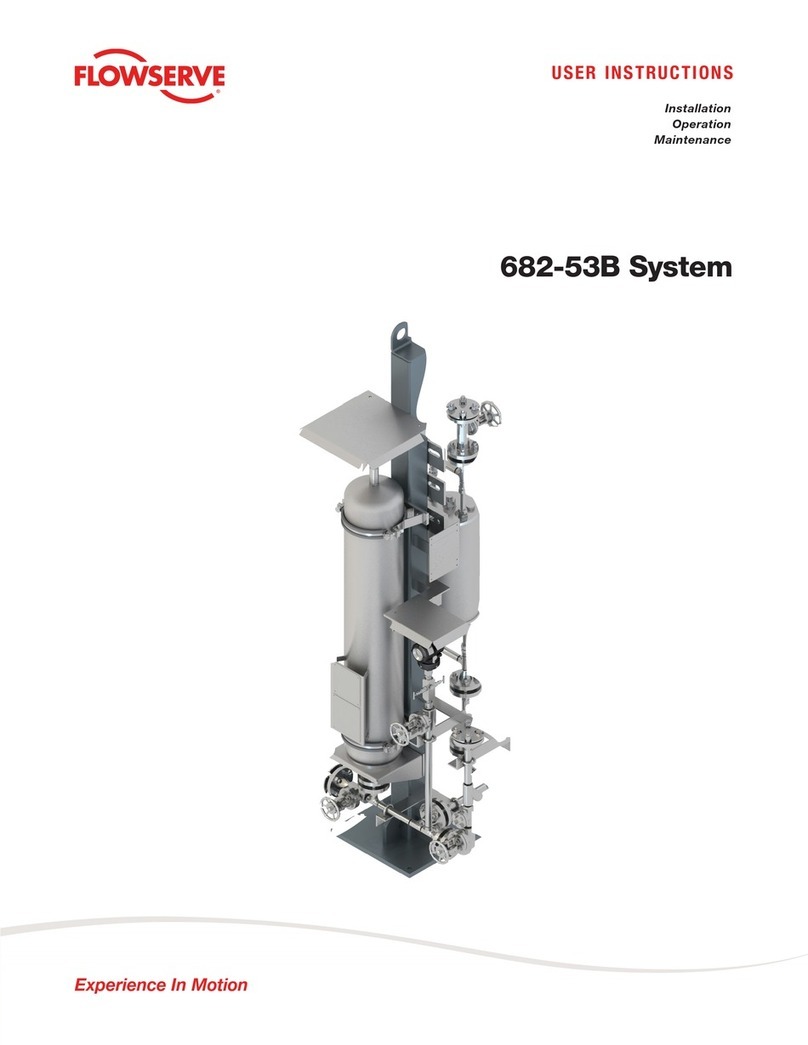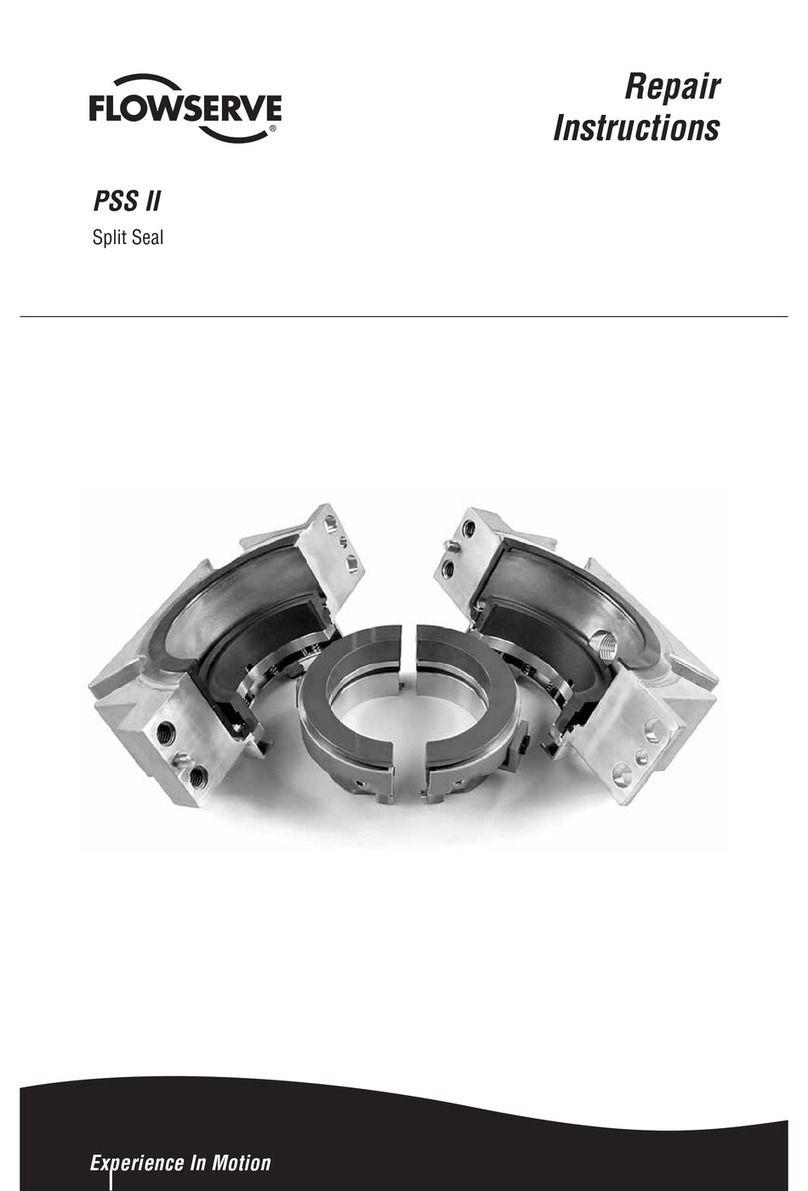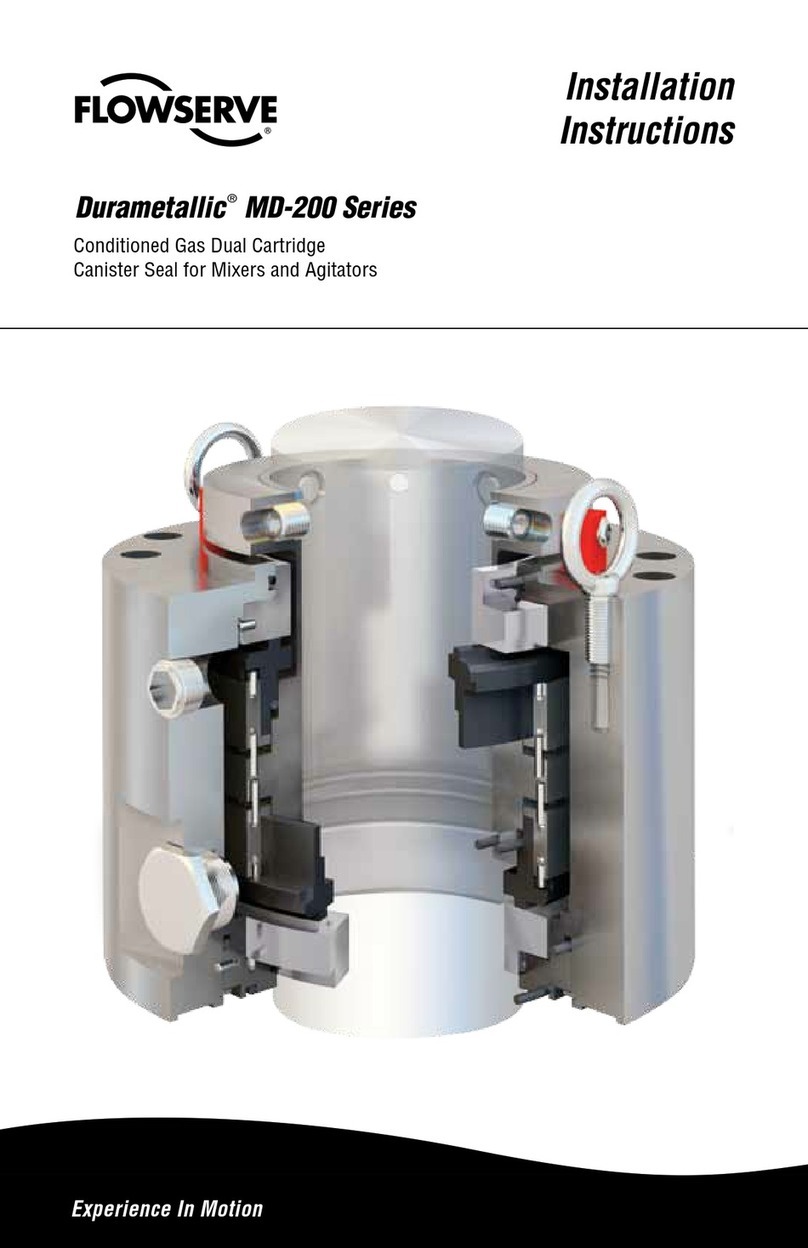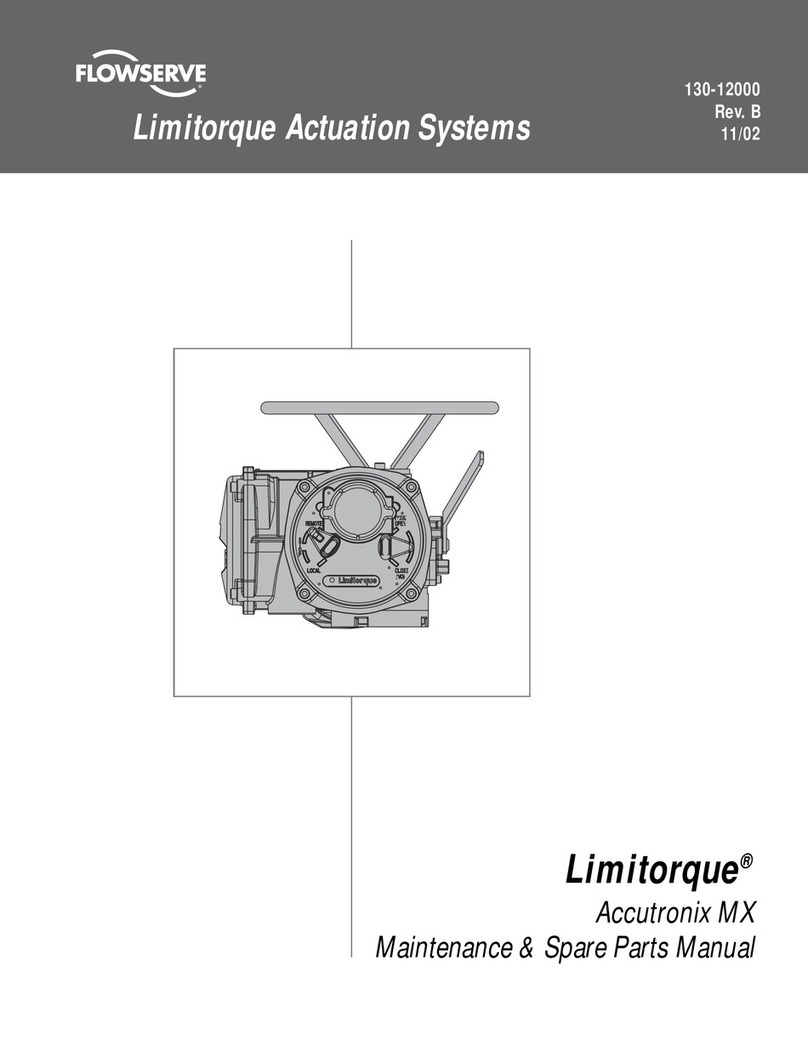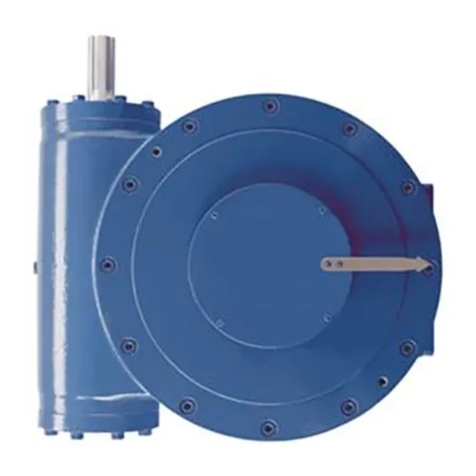
Flowserve.com 4SSIOM000743-00 (EN/AQ) November 2022
682R Reservoir API 682 Compliant Reservoirs
1 Introduction
1.1 About this manual
This manual (which is intended for operating,
maintenance, and supervisory personnel) provides
information on installing, operating, and maintaining the
682R Reservoir.
Installation in accordance with the following instructions
will contribute to long and trouble-free operation of the
assembly.
1.2 How to use this manual
Before using this manual, make sure you have fully read
and understood the safety section, which can be found
in chapter 2. When being new to the 682R Reservoir,
pay attention to section 4, which describes the 682R
Reservoir in detail.
Only trained and qualied personnel should operate the
Reservoir. Refer to section 2.3. Inexperienced personnel
should work on this system under the supervision of
qualied personnel.
When maintaining the Reservoir, always make sure
maintenance procedures are followed. Pay particular
attention to the alerts and icons.
The 682R Reservoir shall be used for as described in this
manual. Discuss with Flowserve if adjustments beyond its
regular use are required.
Changes, modications, repairs or use under conditions
deviating from the design specications without prior
permission of Flowserve can invalidate the product
certication, declaration of conformity and/or nameplate.
NOTE: As hazardous conditions can result from planned
as well as unforeseen circumstances, pressurized
equipment shall always be operated with caution, per site
and local policies.
Before installation, equipment should always be fully
inspected including, but not limited to:
• Any possible damage due to transport or storage
• Cleanliness required before operation
• Existence of an afxed nameplate with correct
inspection markings and design/test conditions
1.3 Other supplied documents
Annex II contains the assembly drawing and sub-
component manuals.
1.4 Conformity with standards and directives
The 682R Reservoir conforms to the following standards
and directives:
• ASME BPVC Section VIII Div. 1
• Pressure Equipment Directive (PED) 2014/68/EU
• Pressure Equipment (Safety) Regulations (PESR) 2016
(UKCA)
• CSA B51

